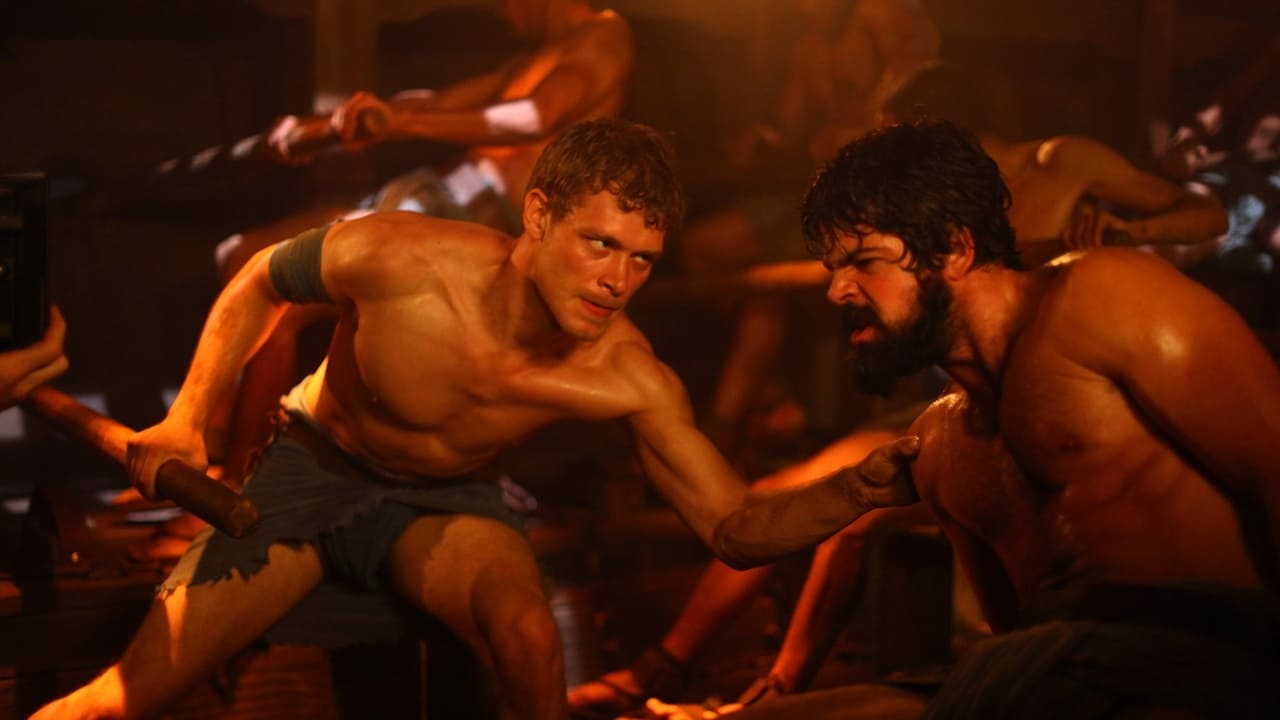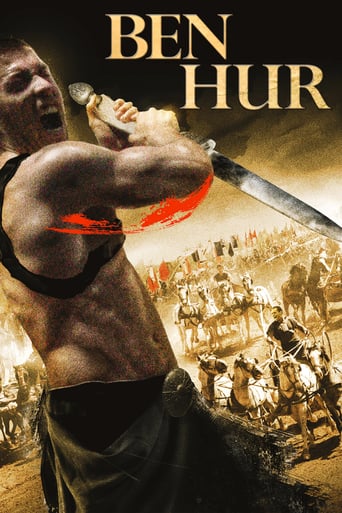

Was this yet another ratings sweep remake of a highly acclaimed film to con TV viewers into watching it at least once? Suffers from all the movie killer flaws that very nearly all "Made for TV" movies have, including cheap production values, mediocre acting, poor audio and visual special effects, mediocre script and dialog, bloat to fill alloted time slot(s), and erratic pacing for commercial break and episode split timing. Save your money, do NOT buy this! Save your time, don't watch it if they rerun it on TV. Wishing I hadn't wasted my time watching the first part. See the 1959 spectacular instead. It's INFINITELY better.
... View MoreJudah Ben-Hur (Joseph Morgan) is a rich Jewish merchant in Jerusalem. He, his sister Tirzah (Kristin Kreuk) and Roman commander Messala (Stephen Campbell Moore) were childhood friends. Ambitious Messala returns from Rome pushing Judah to inform on the Jewish revolt. He tries to stop the demonstration. He gets betrothed to Esther (Emily VanCamp). While the Governor of Judaea Pontius Pilate (Hugh Bonneville) marches in, a tile falls onto him and starts a riot. Messala is demoted. Judah is sent into slavery and encounters Jesus Christ on his way to the crucification. He is pressed into rowing a gallery where he rescues Roman admiral Quintus Arrius (Ray Winstone) after a battle. Arrius adopts him naming him after his dead son Sextus Arrius. He returns to avenge Tirzah and his mother Ruth (Alex Kingston).This is a solid TV mini-series. There are some great actors. The younger leads are mostly TV stars. Joseph Morgan has more youth but not quite the presence of Charlton Heston. The big action is compensated by the modern CGI. The gallery scene works well. The chariot scene is less epic. I like some of the early exposition laying out the political situation. This series may not be necessarily but it is an interesting addition to the '59 classic.
... View MoreThe main problem with these mini miniseries (2 episodes) is that the screenwriters forgot that the novel was subtitled " a tale of the Christ";and all that concerns Jesus is botched ;Wyler never showed his face and all his appearances in the 1959 version were memorable ,particularly when he gives some water to Ben Hur en route to the galleys.The first part of Lewis Wallace's- who said he was influenced by French writer Alexandre Dumas and his "Comte De Monte Cristo"- novel was entirely devoted to the Magi and the nativity.Ben Hur and Messala only appear simultaneously on page 74 of my edition!One should also note that there's an episode,never transferred to the screen ,when Ben Hur tries to raise an army to fight Rome and to save Jesus.He gives up,on the Golgotha,because a divine invisible intervention tells him HE must die.Joseph Morgan,as an user has already pointed out by an user ,is too "Nordic" to be a convincing hero;Emily VanCamp as Esther is too gamine to compare favorably with Haya Harareet in the 1959 version.Nevertheless ,the story is catchy and entertaining,in spite of (or because of) the changes the script has undergone:Messala ,for instance,is (so to speak) still alive -like in the novel-when the Christ is crucified;characters not present ,either in the silent version or in Wyler's were introduced in a tale even more melodramatic than the original: a Greek slave/courtesan who is skilled in love making (There is a hot sex scene between her and a virgin(?)Ben Hur)and in "special" beverages-perhaps an equivalent of Wallace's perfidious Iras;and a treacherous Jew named David,in love with Esther ;the valley of the lepers is ,if we are to believe the screenwriters,a safe place ,as we see Esther bringing bread to the unfortunate sick outcasts ;in Wyler 's version ,she kept her distance ,at least in her first visits.(in the book ,it's a servant who feeds the poor women and takes them to the Christ)The political side,on the other hand ,is more detailed in the MTV work in the first sequences ,and Messala's attitude makes more sense after the tile incident (caused by the hero,like in the book,not by his sister).By the way,the mother,Miriam (no name in the book)has become Ruth,we can wonder why.And in the end,the death of Messala is more human than in the 1959 movie or in the book ,in which the character works behind the scenes:he and Ben Hur do not have any conversation when they meet again.Save it for a rainy day:it's no masterpiece,and the chariot race seems cheap ,but the subplots are numerous,the hints at Juda/Messala childhood are relevant and the supporting cast is up to scratch,with Ray Winstone,the stand out.Best scene:the suicide of Arius in his bath ,as the water turns red.
... View MoreSay BEN HUR and people immediately think of the Charlton Heston Hollywood epic: a film full of elaborate sets, huge crowds and epic chariot races. The powers that be decided time was ripe for a new version of the story, albeit in miniseries form, and no doubt to take advantage of the new-found popularity of the historical miniseries after the success of HBO'S ROME.I for one am a huge fan of such stuff, so I was immediately predisposed to enjoy this outing. I was engaged from the outset: to my shame, I haven't yet seen the Heston film, so watching the story play out was a fresh and involving experience. The total running time is around three hours, and I didn't find that a single moment dragged.As with many of these productions, the cast is packed with familiar faces. Ben Cross, Alex Kingston, Marc Warren, Art Malik and in particular Ray Winstone all seem to be having a ball with the roles they're provided. Stephen Campbell Moore, as the youthful hero, is sufficiently just, upstanding and likable enough, and watch out for a trio of highly attractive female cast members who ease the viewing experience: Emily Van Camp, Kristin Kreuk and, particularly, Lucia Jimenez.The budget is high enough for them to film in authentic, sun-drenched locales, with copious use of sets and extras to build a realistic portrait of the times. The use of CGI (such as in the naval battle sequence) is certainly adequate and the final chariot race doesn't disappoint. It's no ROME, but then, what is?
... View More